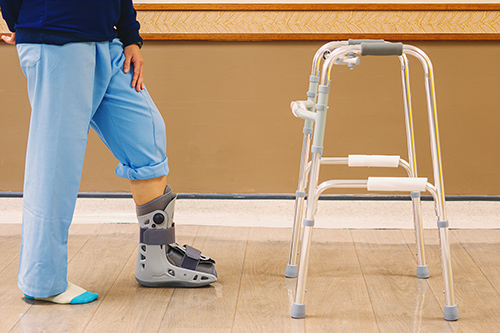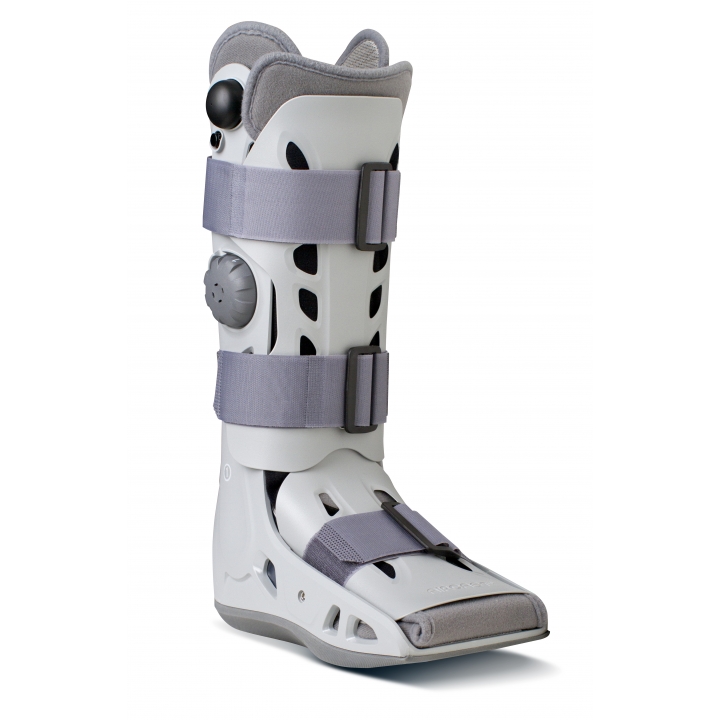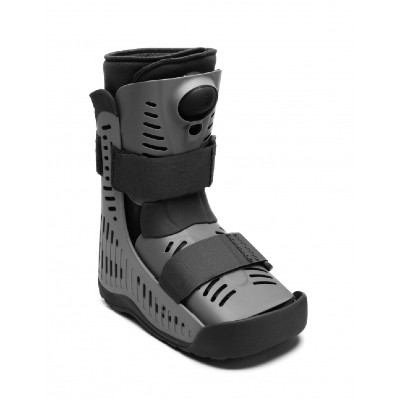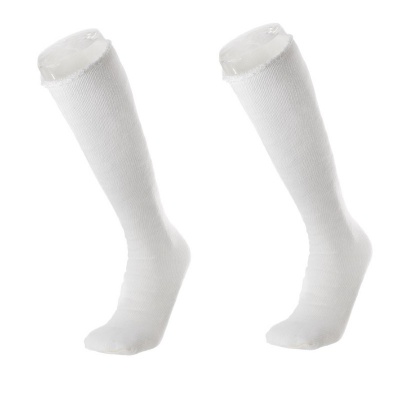How to Fit Your Walker Boot
Walker boots have changed the way we recover from injuries to our lower legs, with inconvenient plaster casts dispensed with, in favour of these highly supportive, removable and reusable alternatives. Walker boots, also known as controlled ankle motion walking boots (or CAM boots for short), are an ideal option when immobilisation is needed but a small amount of weight bearing is still permitted.
Like most pieces of medical equipment, a walker boot will only do its job if it's applied correctly. We've put together this short guide on How to Fit Your Walker Boot that includes some neat tips and tricks to make sure you get the correct fit, every time.
What Will This Guide Cover?
Our Best Walker Boots
Fitting Information
- How to Fit My Walker Boot
- Walking While Wearing A Boot
- Can I Wear My Boot While Asleep?
- Share Your Walker Boot Tips
Our Best Long Walker Boot
Winner: Aircast AirSelect Elite Walker Boot
Why It's Our Favourite...
✔ Absorbs shock and dissipates impacts during movement
✔ Periodic pneumatic compression helps reduce swelling
✔ Lab-tested rocker sole promotes a natural gait
Suitable For...
✔ Ankle sprains and stable fractures
✔ Post-operative immobilisation
Not so Good For...
✘ Those after a shorter option (see our alternative)
Our Verdict: The Aircast AirSelect Walker Boot is our best and most popular post-op walker boot. Fitted with an advanced pneumatic pump that delivers intermitted compression to relieve pain and swelling on every step, it's a must have. With a long "Wellington" boot design that goes right up to just below the knee, this advanced walker boot is ideal for treating more severe injuries.
Customer's Verdict: "This boot gives great support and relief from pain. The ability to finely adjust the support accurately to what is exactly required is very good and I am very pleased with this product. If anything it is better than I thought it would be." - Colin ★★★★★
A short version of the Aircast AirSelect Walker Boot is also available.
Our Best Short Walker Boot
Winner: Ossur Short Top Rebound Air Walker Boot
Why It's Our Favourite...
✔ Soft Flex Edge reduces pressure points for greater comfort
✔ Stretch-to-fit shell provides a compressive, supportive fit
✔ Full rocker bottom is engineered to promote a natural gait
Suitable For...
✔ Grade 2 and 3 sprains
✔ Stable fractures and soft tissue injuries
Not so Good For...
✘ If your recovery requires a taller boot (see our alternative)
Our Verdict: Fitted with a fully integrated pump system, the Ossur Rebound Walker Boot provides fine-tuned, consistent compression to support your foot and ankle in order to relieve pain. A host of advanced features make this short walker boot easy to fit and easy to use. It provides fantastic levels of comfort, protection and shock absorption across the entire foot and lower leg.
Customer's Verdict: "Bought this to replace my husband's full size air walker boot (issued by local hospital) which was way too big and cumbersome. This is so much better for him and he's able to manage much better. Thank you so much!!" - Ann ★★★★★
A long version of the Ossur Rebound Walker Boot is also available.
How To Correctly Fit Your Walker Boot
Whether you're using an Aircast Airselect Elite Walker Boot, an Ossur Rebound Air Walker Boot, or some other alternative, your walker boot likely conforms to the standard design. This consists of a soft inner lining with hook and loop fasteners, a rigid frame to immobilise the leg, a hard plastic shell for protection, and an adjustable closure system to keep the fit firm and secure.
As long as your boot conforms to this design, our short guide should be able to walk you through the fitting process.

Proper application will make your walker boot more comfortable and supportive
Step One - Apply the Sock Liner
To start off, you'll need to apply a sock to prevent any discomfort. An ideal option is the Aircast Walker Boot Replacement Sock, as it's long enough for most boots, and is designed to absorb sweat to prevent friction and discomfort.
Apply the sock gently by scrunching it down, inserting your toes, and then slowly unbunching it as you pull it up, as you would with tights or nylons.
Step Two - Fully Open the Boot
To avoid discomfort while applying the boot, it should be as open as possible before you apply it. This means detaching ALL Velcro straps, which you can then hold back with one hand and place behind your injured leg before application.
Step Three - Slide Foot in and Release
With the Velcro straps still held in one hand to avoid obstruction, gently slide your foot and ankle into the open boot. Without obstruction, you can slide your leg in without having to bend your ankle, making it as comfortable as possible.
Once your foot and ankle are fully in, release the Velcro straps before tightening.
Step Four - Tighten the First Strap
Start the tightening process with the strap closest to your toes. Pull it through the threading loop on the other side of the boot and attach it to the Velcro on the other side. The tightening of the first strap is especially important, as it will dictate how much the boot constricts your foot.
It should be tight enough to restrict foot and ankle movement, but not tight enough to cause pain or cut off circulation.
Step Five - Tighten from the Bottom-Up
From this point you can start to tighten the rest of the straps until they're at the same level as the first. After that, you can tentatively stand up and test if it's comfortable to place weight on the boot.
Walking While Wearing A Boot
Walking with a walker boot may feel slightly odd at first. Most walker boots are rounded to provide a roll from heel to toe. If you feel pain while walking at first, we recommend you try walking with a cane or a crutch until the pain subsides.
The experts also recommend that you wear a shoe with the same height as your walker boot to avoid uneven pressure and an awkward walking gait. An ideal option is an Evenup Shoe Balancer, which allows you to wear your normal shoes by raising the base of your foot to an equally elevated height.
Can I Wear My Walker Boot When I Sleep?
Depending on your injury, experts usually recommend you sleep with your walker boot on in order to continue receiving support and elevation. We normally suggest that you leave the boot on, but with the straps loosened for comfort.
You may find it useful to surround your injured foot with pillows to maintain support and prevent displacement. This gives extra comfort and peace of mind that your foot is secure while you sleep.
Any Other Walker Boot Tips?
These are the best tips from our experts at Health and Care, but the greatest innovations come from experience. If you have any tips you use with your walker boot, or any questions, feel free to tell us about them in the comments section below. Alternatively, you can get in touch with us on Facebook and Twitter!
Tags: Health and Care Expert Series, Walker Boots
Aircast Walker Boot Replacement Sock (Pack of 2)
- Absorbs sweat to reduce friction and increase comfort
- Ideal for use with almost every type of walker boot
- Creates a barrier between the boot and skin
- Supplied in one universal size to fit most



